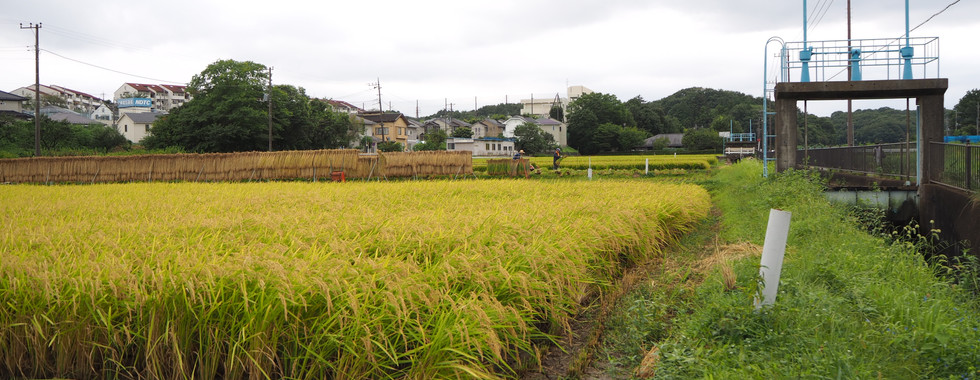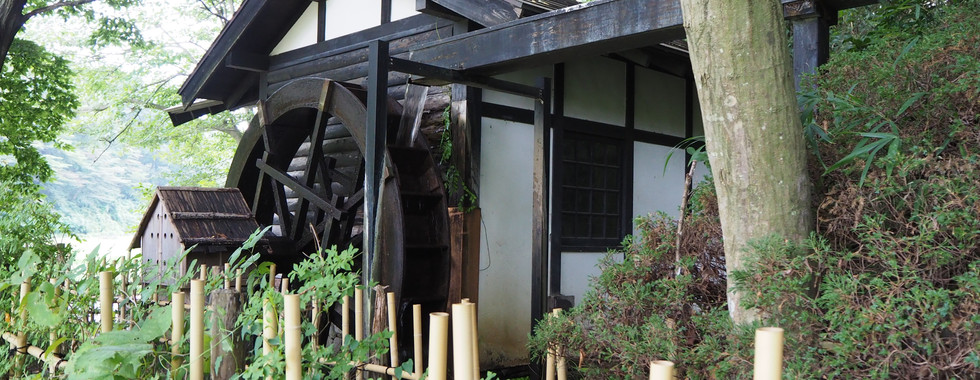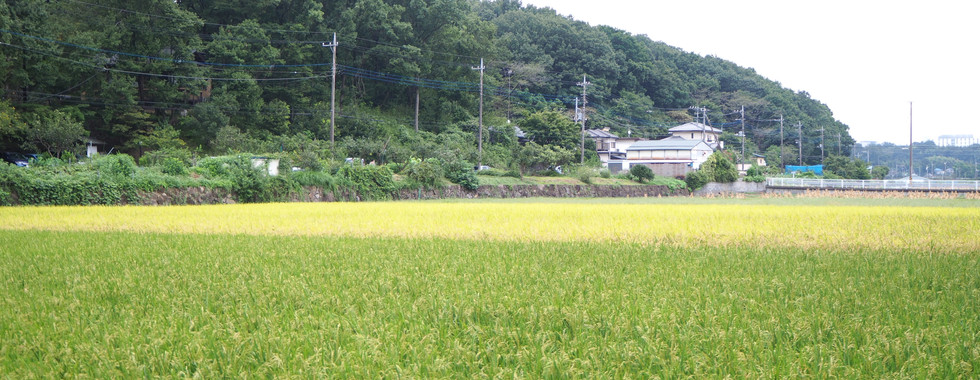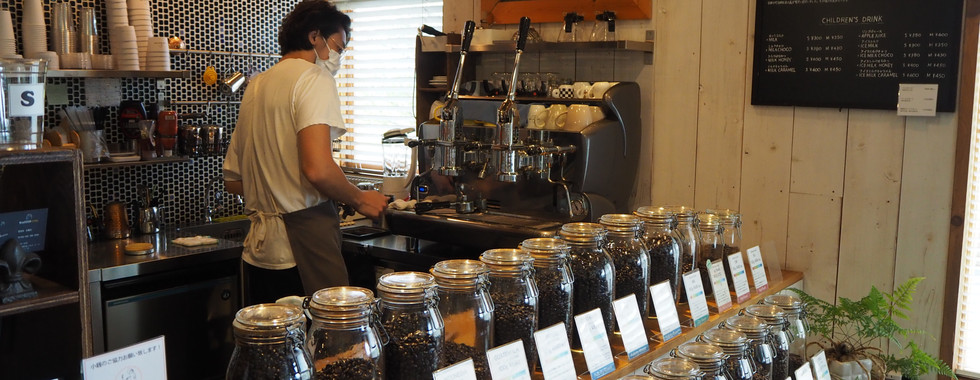Japan Then and Now 1, 日本事情コース1
- Orange

- Apr 28, 2016
- 17 min read
Updated: Oct 20, 2020
Points of Preparation
Geography and climate exert a strong influence on the history and the national character of a country. An important characteristic of Japanese geography is that Japan is an island nation surrounded by the sea.Its climate is significantly affected by the ocean currents flowing near the archipelago, seasonal air masses approaching it, and its mountainous topography. As a result, Japan's precipitation is relatively high and its four seasons are distinct.Let's look into the influence of such geographical and climatic conditions over Japanese history and the character of the people.
地理や気候は、その国の歴史形成や国民性に多大な影響を与えます。地理的な特徴として重要なことは日本が海に囲まれた島国であることです。気候の面では、付近を流れる海流と周囲の気団の影響、ならびに、山地が多い日本の地形の影響で、日本の年間降水量は比較的高く四季の区別もはっきりしています。以上のような地理的・気候的な特徴が日本の歴史あるいは国民性の形成にどのように影響したかをあらかじめ考えておきましょう。
Section 1, Japan: Then and Now, All about Japan
知識編
(1) Land area of Japan is about 378,000㎢, this is 1/26 of China, and 1/25 of the United States, it is almost the same as Germany. British land is 2/3 of Japan, and France is 1.5 times big as Japan. Japanese archipelago is north latitude is between about 20 to 45 degrees, east longitude is located almost from 123 degrees and 154 degrees, it is about 3,000km from north to south. Japan Standard Time meridian is a line of 135 degrees of east longitude passing through Akashi city in Hyogo Prefecture.
日本の国土面積は約378,000㎢で、中国の26分の1、米国の25分の1で、ドイツとほぼ同じである。英国の国土は日本の3分の2、フランスの国土は日本の1.5倍である。日本列島は北緯ほぼ20度から45度、東経ほぼ123度から154度の間に位置しており、南北約3,000㎞におよぶ。日本標準時子午線は兵庫県の明石市を通る東経135度の線である。
The northern tip of Japan is Cape Soya at 45 degrees and 31 minutes north latitude. The southern tip is Okino-trishima at 20 degrees and 25 minutes north latitude. When the Northern Territories are returned to Japan, the northern tip of the land will be Etorofu Island at 45 degrees and 33 minutes north latitude.
日本の最北端は宗谷岬(北緯45度31分)、最南端は沖ノ鳥島(北緯20度25分)である。北方領土が返還されれば日本の最北端は択捉島(北緯45度33分)になる。
The southernmost inhabited island is Hateruma Jima, which is located south of Iromote Island, at 24 degrees and 2 minutes north latitude. For comparison, Oahu Island in the Hawaiian Islands is located at 21 degrees and 20 minutes north latitude. The western tip is Yonaguni Island at 122 degrees and 56 minutes east longtitude. The easternmost island is Minami-torishima at 153 degrees and 59 minutes east longtitude.Japan's land area is the 60th largest in the world. However, Japan's EEZ, or the exclusive economic zone is the 6th largest in the world.
日本最南端の有人島は沖縄諸島の波照間島(北緯24度2分)。ちなみに、ハワイ諸島オアフ島は北緯21度20分に位置する。日本の最西端は与那国島(東経122度56分)、最東端は南鳥島(153度59分)である。日本の国土面積は世界60位だが、排他的経済水域は世界6位である。
A warm ocean current called the Tsushima-Kairyu flows northward along the Japan Sea coast. Another warm current called called the Nihon-Kairyu flows northward along the Pacific coast. There is also a cold current called the Chishima-Kairyu, which flows southward from the Kuril Island along the Pacific coast.In winter, wet and cold seasonal northwest winds are warmed by the aTsushima-Kairyu, a warm ocean current, resulting in heavy snowfalls on the coastal areas along the Sea of Japan. In summer, the Nihon-kairyu, a warm ocean current,is further warmed up by southeastern seasonal winds, resulting in a lot of rain on the Pacific coastal areas.Moreover, the early summer rainy season called "tsuyu" brings heavy rain during the mid-June through mid-July period, and typhoons frequently hit Japan from August through November. Hokkaido has no rainy season.
日本海を北上する暖流を対馬海流、日本列島の太平洋側を北上する暖流を日本海流(黒潮)、日本列島の太平洋側に沿って南下してくる寒流を千島海流(親潮)と呼ぶ。冬には北西の季節風が対馬海流で温められて日本海側に大雪をもたらす一方、夏には南東の季節風が太平洋側に雨を多くもたらす。また、6月中ばから7月半ばまで梅雨があり、8月~10月には台風が来襲する。なお、北海道地域には梅雨はない。
The world's average annual precipitation is about 970 millimeters, while Japan's is about 1,700 millimeters. Japan's climate is categorized into six types according to the region.
The first type is observed in the southwestern islands. The area has a lot of rain and a warm climate even in winter. The average temperature is over 20 degrees Celsius.
The second type is that of the Japan Sea side. The area has a lot of snow during winter.
The third type is that of the Pacific coastal areas. The area has a lot of rain in summer, while it gets very dry during winter. Some areas have an annual rainfall of over 2,000 millimeters.
The fourth type is that of the Inland Sea area, where it is relatively warm and dry throughout the year.
The fifth type is that of inlland areas surrounded by mountain, where it is dry almost throughout the year, but the temperature differences between summer and winter are rather large.
The sixth type is that of Hokkaido. It has low precipitation and gets extremely cold during winter.
Most parts of Japan belong to the Temperate Zone, and are characterized by distinct seasonal changes. The average annual precipitation of Tokyo, Japan's capital, is about 1,500 millimeters.
年間降水量は世界平均が約970㎜、日本は約1,700㎜である。地域別の気候の特徴としては、①南西諸島は多雨で冬も温暖(平均気温が20℃以上)、②日本海側では冬に降水[雪]量が多く、③太平洋側では夏に多雨(1,500~2,000㎜台)、④瀬戸内は少雨で冬も比較的温暖(1,000㎜程度)、⑤内陸地方は少雨(1,000㎜程度)で夏冬の気温差が大きく、⑥北海道は少雨で冬の寒さが厳しい(平均気温が1ケタ台)。日本の大部分の②~⑤は温帯に属しており、四季の変化が明確である。東京の年間降水量は約1,500㎜である。
Japan's forest cover is about 67 percent, and most forests are located in mountainous areas. As for the figures for other countries, North America's is 38 percent; Euroope, 32%; Africa, 22 percent and China, 15 percent.
Japan's forests are categorized into four types. The first is the evergreen coniferous forests found in Hokkaido and Northern Honshu. They consist of cedars, cypresses and others. The second is deciduous broadleaved forests found in cold and mountainous areas such as Hokkaido, northern Honshu and central Honshu. They consist of beeches, oak trees, maple trees, and chestnut trees. The third is evergreen broadleaved forests found in western Honshu, Shikoku and Kyushu. The forth category is tropical rain forests found in southern Kyushu and southwestern islands.
Janan's forest consist of both artificial forests and natural forests. Now the ratio of planted forests to natural forests is 4 to 5, and the ratio of planted forests has been increasing. Most planted forests consist of coniferous trees, amoung which the most common are cedar trees planted after the war, now accounting for about half of all the planted trees. Cedar, cypress and pine trees make up about 90 percent of all the artificial forests. On the other hand, 72 percent of natural forests are made up of broadleaved trees, which retain great diversity.
日本の森林率は約67%でそのほとんどが山岳地帯である。一方、他国の森林率は北米が38%、ヨーロッパが32%、アフリカが22%、中国が15%である。日本の森林は、亜寒帯・亜高山帯常緑針葉樹林(北海道・本州北部に多いエゾマツ、ハイマツ、ツガ、シラビソなど)、冷温帯・山地帯の落葉広葉樹林(北海道・本州東部・中部に多いブナ、ミズナラ、カエデ、トチノキなど)、暖温帯、低山帯の照葉樹林(本州西部・九州・四国に多いカシ、シイ、タブ、クスなど)、亜熱帯多雨林(九州南部・南西諸島に多いアコウ、ガジュマル、ヘゴなど)に分けられる。森林には人工林と天然林があるが、近年、その割合は4:5程度であり、人工林の割合が増えている。人工林のほとんどは針葉樹で、特に戦後に植林したスギは人工林の半分近くを占めており、スギ、ヒノキ、カラマツの3樹種で全体の9割近くを占めている。一方、天然林の72%は広葉樹が占めており、多様な樹種構成となっている。
Talking about Japan, Lesson 2
(1) Who was the first Emperor of Japan?
The first Emperor was the Emperor Jinmu. According to an ancient mythology, he ascended the throne in 660 B.C. National Foundation Day, a national holiday falling on February 11, is the day he took the throne. Since Japan was still in the New Stone Age at that time, his existence is thought to be more of a legend than of a historical fact.
⇒ここがポイント
日本書紀では神武天皇を初代天皇としている。今上天皇は125代目。ただし、当時日本はまだ縄文時代(≒新石器時代)で伝説上の天皇と位置付けておいたほうがよい。なお、神武天皇の即位日に因んだ建国記念の日にも触れておくと話が広がりやすい。
(2) Why did samurai have the practice of hara-kiri?
Hara-kiri was performed after defeat in battle. It was considered a more honorable way of dying than execution. In the Edo Period, the practice was also used as a punishment for samurai who committed serious crimes.
⇒ここがポイント
切腹(せっぷく)とも言うが、外国では「はらきり」の名称で知られている。切腹には、合戦に負けたときに死に華を咲かせる目的で自発的に行うものがあるが、江戸時代になると刑罰目的でお上から命令される切腹が定型化していく。
(3) What was the difference between the Emperor and the Shogun?
The shogun was a kind of military dictator. Throughout most of Japan's history, the Emperor was a figurehead. The actual running of the country was done by the military government, with the shogun at its head.
⇒ここがポイント
難問の一つ。天皇は神格化された日本の象徴的統治者で、天皇の委託によって時の最大実力者が政権に就くという構図があったことを説明しよう。分かりにくい概念であるため、更なる質問が出てくる可能性もあるので注意すべき項目である。
(4) Have you ever seen the Emperor?
I have seen him once at the Imperial Palace on January 2nd. On this day and on his birthday, December 23, it is customary for the imperial family to greet the public from a terrace in the Imperial Palace.
⇒ここがポイント
天皇皇后両陛下の一般参賀は天皇誕生日と1月2日で、他の皇族の方々も加わり長和殿ベランダでご挨拶される。
Date : December 23
Place : The Imperial Palace
(You can come in from 9:30 to 11:20)
Time : (1) 10:20 / (2) 11:00 / (3) 11:40
Date : January 2nd
Place : The Imperial Palace
(You can come in from 9:30 to 14:10)
Time : (1) 10:10 / (2) 11:00 / (3) 11:50 / (4) 13:30 / (5) 14:20
See this video : https://www.youtube.com/watch?v=bKsbc7Ta_4w
(5) Please tell me about one of your favorite historical figures.
I like Toyotomi Hideyoshi. He was a warlord in the late 16th century. He came to power by reuniting the whole nation, which had been divided by local warlords at odds with each other. He was born in a poor farming family, but with his extraordinary sense of battle, eventually reached the top of the military ranks. His success is loved by many other Japanese.
⇒ここがポイント
歴史マニアの人なら本命を言いたいところだが、説明が困難な人物は避けた方が無難。またその人物がどうして好きなのかという点にも触れておくとまとまりのある回答となる。
Homework for Lesson 3
(1) Is there a way for foreign tourists to make their travel economical?
(2) Are car rental services available in Japan? Could you give me some tips on driving in Japan?
(3) Will you tell me about lodgings in Japan?
(4) Where can I do some tax-free shopping?
(5) What should I do when a big earthquake occurs during my stain in Japan?
My Homework for last week.
(1) What is the difference between ryokan and minshuku?
Although both are Japanese style inns, ryokan are generally higher-priced than minshuku because they offer better room, bath and food services. Since many minshuku are family-run, their services are usually limited, but each has its own selling point, which might be a good meal, a hot spring, or a rustic atmosphere.
⇒ここがポイント
一般に旅行の方が高いが、宿泊料金の差が宿泊設備や料理にあることを説明する必要があるだろう。ただし、民宿には旅館では味わえない家族サービス的な良さがあることも伝えておこう。
(2) Are car rental services available in Japan? Could you give me some tips on driving in Japan?
Yes, they are available in most cities as well as at airport and major train stations. When you apply to rent a car, you need your international driver's license. Actually, renting a car in Japan is not recommended because the roads are very congested. In Japan, cars travel on the left hand side of the road. Know your route in advance, because road signs may not have alphabet lettering. All expressways are toll roads. And be careful --- traffic regulations are very strict and orderly.
⇒ここがポイント
日本ではレンタカーはあまりお勧めではないだろう。車が多い上に、分かりにくい道路標識、厳しい交通制限などなど。都会ではいくら混んでいようと電車がベストである。
(3) Will you tell me about lodgings in Japan?
Accommodation varies widely in terms of style, price and location. There are both western-style hotels and traditional Japanese inns. The accommodation charge is subject to a consumption tax of 8%. First class hotels also impose a 10 to 15% service charge as well. Tipping is not customary, except at luxury ryokan, where a guest will tip a maid when she first serves tea in the room.
⇒ここがポイント
洋式・和式の宿があることをはじめ、消費税、サービスなどについても情報を与えるとよい。日本にはチップの習慣は特別な場合を除いて存在しない。
(4) Where can I do some tax-free shopping?
Today in Japan, duty-free shops can be found everywhere. As for nondurable goods including foodstuff, cosmetics and medicine, the purchase of over 5,000 yen up to 500,000 yen per store per person per day will be exempt from tax, and for other products such as home electric appliances, clothing and jewelry, the purchase of over 10,000 yen per store per person per day will be exempt from tax.
⇒ここがポイント
かつて、東京では有楽町のインターナショナル・アーケードや秋葉原の家電量販店、京都では京都市左京区の京都ハンディクラフトセンターなどが免税店として有名であったが、今では免税店の申請が簡単になり、どこにでも存在する。従来、家電、装飾品、衣類、靴、かばん等に関して1人1日1店舗あたり1万円以上が免税対象だったが、2014年10月1日以降、食品類、飲料類、たばこ、薬品類及び化粧品類等の消耗品も免税対象に加えられた。これらの新規免税対象商品目については、1人1日2店舗あたり「5千円超50万円以下の購入」が免税となる。
(5) What should I do when a big earthquake occurs during my stay in Japan?
When you are inside the hotel, open the door to prevent the door from jamming shut. Hide yourself under a table or stay in a restroom or a bathroom, which is relatively safe. When you are outside, avoid falling objects. It is best to go to the nearest evacuation site, which may be a school ground or a park, indicated by a sign to that effect. Each municipality has a system of providing necessary information on further tremors and support services, so follow the directions from the authorities.
⇒ここがポイント
建物内部にいるときにはドアを開けて避難路を確保し、テーブルなどの下に隠れる。トイレやバスルームは比較的安全。外にいるときには落下物に注意しながら広域避難場所へ。後は当局の情報に注意する。
(1) Is there a way for foreign tourists to make their travel economical?
Yes, there is. At many tourist offices in Japan so-called Welcome Cards are available for overseas visitors, With this card, you can get discounts and special services at art galleries, museums, sightseeing attractions, shopping areas, restaurants and transportation facilities. Also, discount train tickets and passes are available for most lines. Inquire at any station or on the web.
⇒ここがポイント
ウェルカムカードは外国人観光客に限って発行される優遇カード。宿泊施設、料理・飲食店、博物館、美術館、土産物店等の観光施設や交通機関を利用する際に提示することにより、割引料金等の優遇措置が受けられる。
Homework for next lesson, it means next year \(^.^)/
次回レッスンの宿題です。つまり、来年ということですね~。
(1) What are some typical Japanese dishes?
(2) What are some differences between sake and shochu? How are they usually drunk?
(3) What is a good way of enjoying good Japanese food at a reasonable price?
(4) What Japanese food do you like?
(5) Where do you live? Tell me about the local cuisine of your hometown.
Japan Standard Time Meridian (JSTM)
exclusive economic zone (EEZ)
warm ocean current
cold ocean current
monsoon / seasonal wind
annual precipitation
forest cover
deciduous broad-leaved forest
日本標準時子午線
排他的経済水域
暖流
寒流
季節風
年間降水量
森林率
落葉広葉樹林
(1) What does a traditional Japanese-style house look like?
A traditional Japanese-style house is that of a wooden structure, with its roof covered with tiles. Rooms are tatami-matted and are separated by fusuma (sliding doors). Some rooms have a tokonoma (alcove) or oshiire (closet) where sets of futon can be stored, These rooms are separated by shoji (sliding screens) from the corridors which are laid out to surround the whole structure.
⇒ここがポイント
全体から個別へと説明を進めていくと混乱しない。日本家屋は複数の部屋が襖で仕切られており、建物を取り囲むように配置された廊下から障子で仕切られているのが特徴。頭にイメージを浮かべながら説明するとよい。
Talking about Japan, Question and Answers
(1) Kimono are worn during the New Year holidays, at commencement ceremonies, on Coming-of-age Day, or at wedding banquets by both wedding couples and guests. As for myself, I often wear it when I practice the tea ceremony.
⇒ここがポイント
一般論だけでなく、自分個人の話も一言付け加えておくと会話が弾みやすい。いっぱんろん だけ で なく、じぶん こじん の はなし も ひとこと つけくわえ て おく と かいわ が はずみ やすい。
(2) I am hoping to buy a kimono. How expensive is it?
The cheapest silk kimono might cost over 100,000 yen and high quality kimonos could easily cost several million yen. Although recycled kimonos are often available at cheaper prices, they might still be too expensive for a souvenir. In that case, a light cotton yukata, an informal kimono, might be recommended. You can probably find one for less than 10,000 yen. It is also easier to put on than a regular kimono.
⇒ここがポイント
きちんとした着物はやはり高価である。安価なリサイクルものもあるが、それでもお土産には高いかも?そのような場合、浴衣がお勧めかもしれない。きちんとした きもの は やはり こうか である。あんかな リサイクルもの も あるが、それでも おみやげ には たかい かも?そのような ばあい、ゆかた が おすすめ かも しれない。
(4) What are Japanese housing situations like?
Japanese housing is relatively expensive mainly because of Japan's high land prices. Although the average land prices in Japan declined after the bubble economy burst in the early 1990s, given the shrinking average income of the Japanese workers, they are still high in urban areas and the suburbs. The housing situation is especially bad in big cities such as Tokyo and Osaka, with lower home ownership, smaller average floor space, and higher housing prices and rent.
⇒ここがポイント
日本の住宅は地価が高いため高価である。バブル経済崩壊以後、地価は下がり続けているが、ともに下がり続けている平均収入を考えると、未だに高いと言える。さらに、大都市では、持ち家率も低く、床面積も狭く、価格も高い。
にほん の じゅうたく は ちか が たかい ため こうか である。バブル けいざい ほうかい いご、ちか は さがり つづけて いる が、とも に さがり つづけて いる へいきん しゅうにゅう を かんがえる と、いまだ に たかい と いえる。さら に、だいとし では、もちいえ りつ も ひく く、ゆか めんせき も せまく、かかく も たかい。
(1) Why does it rain a lot in Japan?
There are some reasons. In winter, cold northwest seasonal winds bring a lot of rain and snow on the Sea of Japan side. In summer, warm and wet seasonal winds bring a lot of rain to the Pacific coastal areas. Moreover, there is an early summer rainy season during the mid-June through mid-July period, and many typhoons hit the country from September through November. They also bring a lot of rain.
⇒ここがポイント
冬は日本海側での降雪、夏は太平洋側での降雨が特徴。さらに、梅雨、台風の季節に触れておくと十分な回答となる。
(2) In winter what is the weather like in Hokkaido and Okinawa?
Hokkaido is very cold with its average temperatures making below zero. Since it snows a lot, Hokkaido is popular with skiers. Sapporo, Hokkaido's capital, holds a Snow Festival in February, in which large snow and ice statues are built along the main boulevard. Okinawa is warm with average temperatures of around 25 degrees Celsius.
⇒ここがポイント
北海道は寒さが厳しく、沖縄は温暖である。北海道に関しては、寒い地域ならではの観光の魅力にも触れておこう。同じように、日本の夏は蒸し暑く観光客には厳しい季節だが、日本の夏ならではの魅力についても考えてみるとよい。
(3) Why does Tokyo have dry weather in winter?
In winter, northwest winds bring a lot of snow to the coastal areas of the Sea of Japan, and the mountains beyond. These winds pass over the mountains and have lost all their moisture by the time they reach Tokyo, which is located on the opposite side, on the Pacific coast.
⇒ここがポイント
冬の北西の季節風は「冬将軍」と呼ばれ、日本海側に大雪をもたらすが、十分に水分を放出した季節風は中部山岳を超えて関東平野に降りてくると、極端に感想する。
(4) What is the tsuyu? How do Japanese like it?
Tsuyu is the early summer rainy season. It is caused by the seasonal rain fronts settling over the middle to the southern parts of the Japanese archipelago. Most Japanese think it an unpleasant season, but not necessarily hate it because they know that the rain during the season is indispensable for agriculture such as rice growing as well as for filling the dams all across the country.
⇒ここがポイント
梅雨は不快な季節と思う人は多いが、梅雨がもたらす雨が農業や飲料水として重要な役割を持っていることから、梅雨を毛嫌いしているわけではない。一方的に好き・嫌いの話にならないように気をつけよう。
(5) In Japan, there're so many weather forecast programs on TV. Why is it?
Since Japan is mountainous and is surrounded by the sea, its precipitation is generally hign, and the weather sometimes changes drastically according to the area and the season. Sometimes bad weather causes flooding, mudslides or wind damage. Because of this, weather forecast are important so that people can prepare for bad weather. People going out for the day rely on weather forecasts to decide whether to bring an umbrella with them or what to wear for the day. Moreover, Japanese like to hold outdoor events throughout the year including festivals and seasonal customs such as cherry blossom viewing, so tha demands for weather forecasts are quite high.
⇒ここがポイント
いくつか理由が考えられる。まずは、日本は雨が多く、雨がもたらす災害も多いため、天気予報は重要な役割を果たしている。また、多くの人たちは、外出の際に傘の有無や服装を決めるのに天気予報が必要である。これは日本の雨が欧州の雨に比べると激しく降ることや、日本では季節に合う服装が決まっており、ファッションの面からも天気予報に頼ることが多いからだと言える。また、屋外の行事も多いことなど、天気予報の需要は高い。その他、洗濯物を屋外に干すことが多いことや、通勤には車を使わない人が多いことなど、天気予報への依存度は欧米に比べて高いと言える。
































Comments